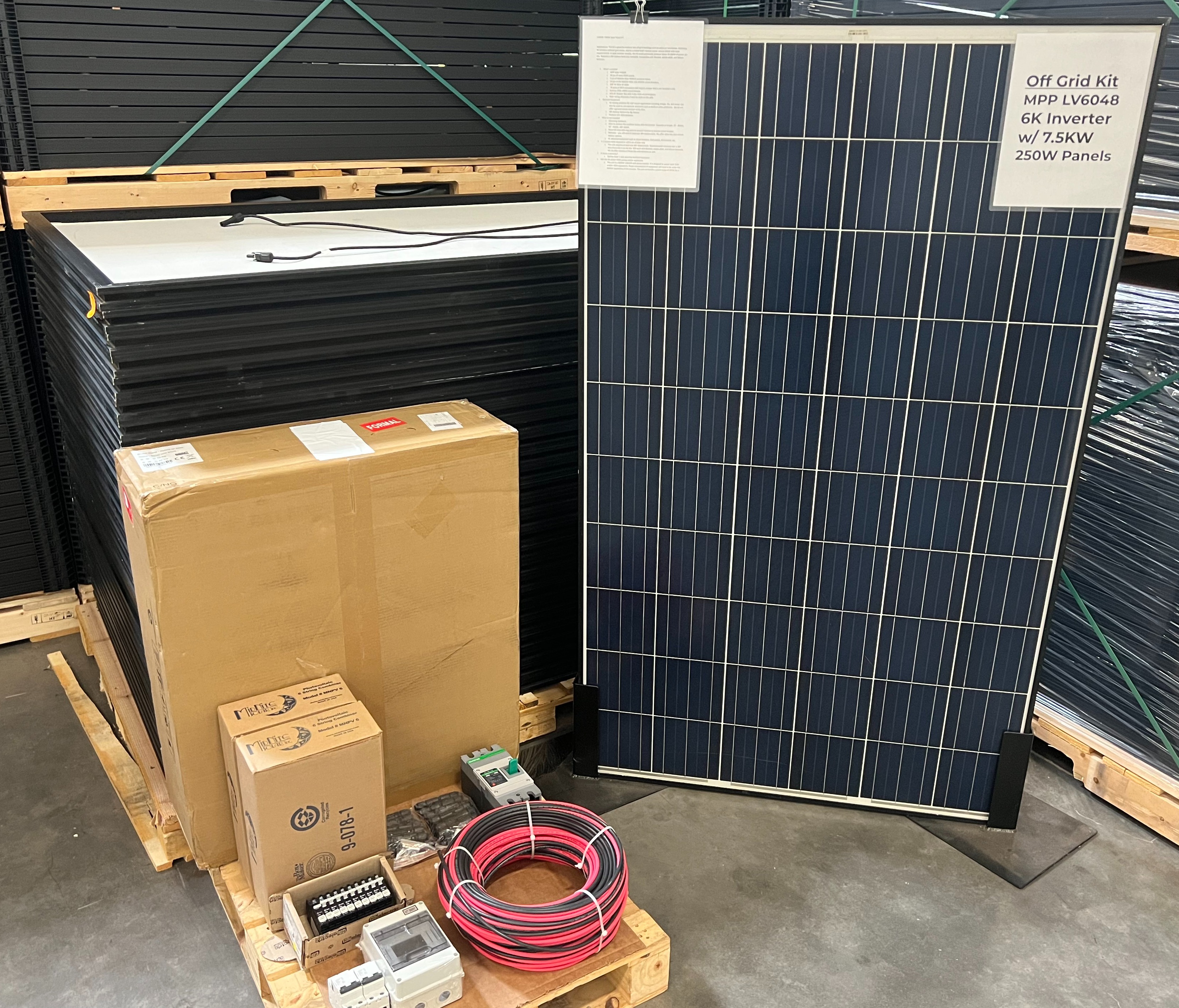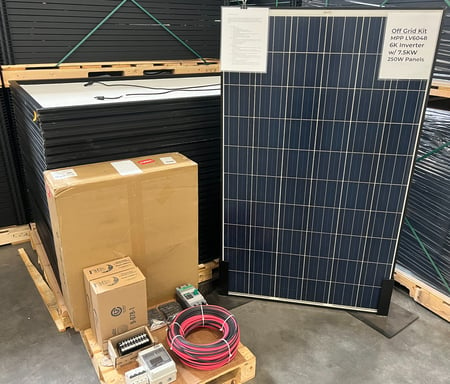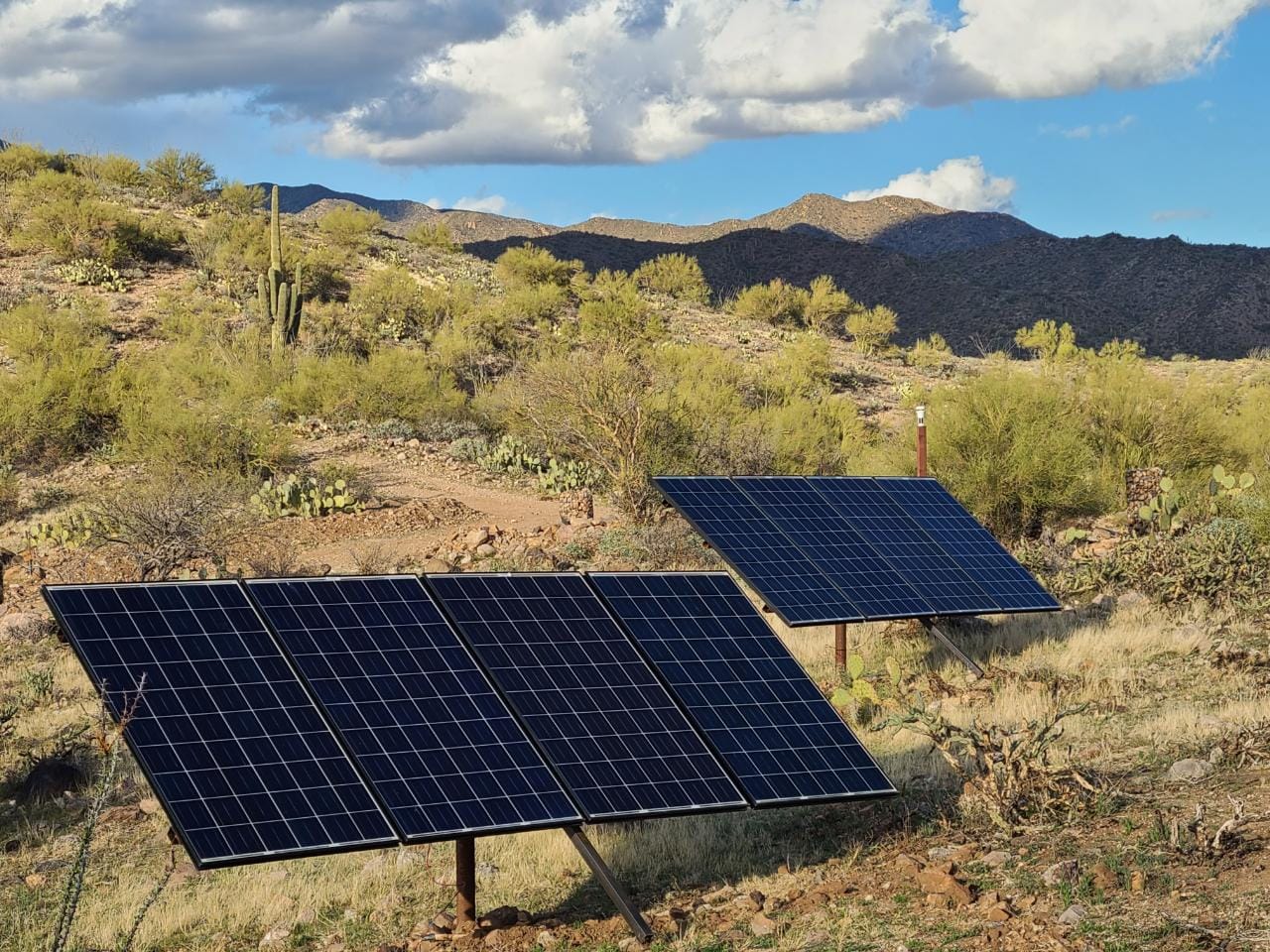What is an Off-Grid Kit and How Are They Different?

The Essentials for Off-Grid Kits May Include:
- Charge controller and inverter or a hybrid inverter

- Combiner box or parallel adaptors
- 10 AWG PV wire
- DC disconnects
- Fuses
- MC4 connectors
- Solar panels*
- Battery storage*
*as an option on some of our kits
There are generally two types of off-grid configurations, one with separate components or one hybrid inverter. Each configuration will depend on one's power need and budget. Off-grid kits can be flexible and can change depending on preferences.
Many off-grid kit configurations consist primarily of five main parts; a solar panel array, a parallel adaptor or combiner box, a charge controller, a battery storage system, and an inverter to convert DC to AC electricity.
Below is a simple component setup example:

An example of a hybrid inverter configuration where the charge controller and inverter are one single unit:

Benefits of Off-Grid Kits:
There are many benefits to being off the grid. The first benefit of living off the grid is it makes you completely energy-independent! Power outages are unpredictable and many times, occur without warning. Having an off-grid solar kit can help offset this. Almost all off-grid kits can be installed virtually anywhere and are fairly simple to DIY! We have a design and technical team that would love to help with your DIY project. Another huge benefit to being off the grid is it sets you free from rising electricity costs. Going solar in any capacity can really help you save on those expensive electric bills. Our off-grid kits are perfect for those who live in rural areas as well. Lastly, of course, going solar is very environmentally friendly.
How are Off-Grid Kits Different from Grid-Tied?
 Off-grid setups are completely independent of home utilities but you have to supply your own electrical storage. Many of our kits come with battery storage. When the power goes out with a grid-tied system, you will lose power if there is no battery backup. Off-grid systems will maintain power if the power goes out. Grid-tied systems help reduce your dependency on utilities. In some cases, utility companies may even buy back kilowatts to help offset costs.
Off-grid setups are completely independent of home utilities but you have to supply your own electrical storage. Many of our kits come with battery storage. When the power goes out with a grid-tied system, you will lose power if there is no battery backup. Off-grid systems will maintain power if the power goes out. Grid-tied systems help reduce your dependency on utilities. In some cases, utility companies may even buy back kilowatts to help offset costs.
Off-grid kits are more DIY compared to grid-tied. Grid-tied can also be DIY but are more complicated. Installation of residential or commercial grid-tied kits is typically maintained by the installation company. This doesn't mean you can't DIY, but it has to be permitted and there are more hoops to jump through. The last main difference is that off-grid can be installed virtually anywhere whereas grid-tied can only hook up to where there are already existing utilities, making off-grid kits perfect for those living in rural areas, campers, or skoolies.
Want to Learn Even More About Our Off-Grid Kits?
Check out our most recent YouTube video below!


